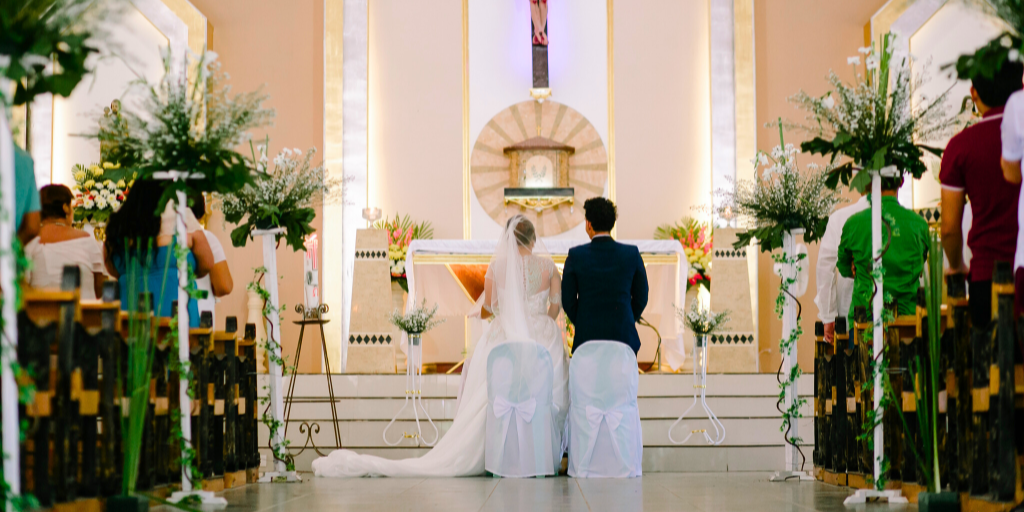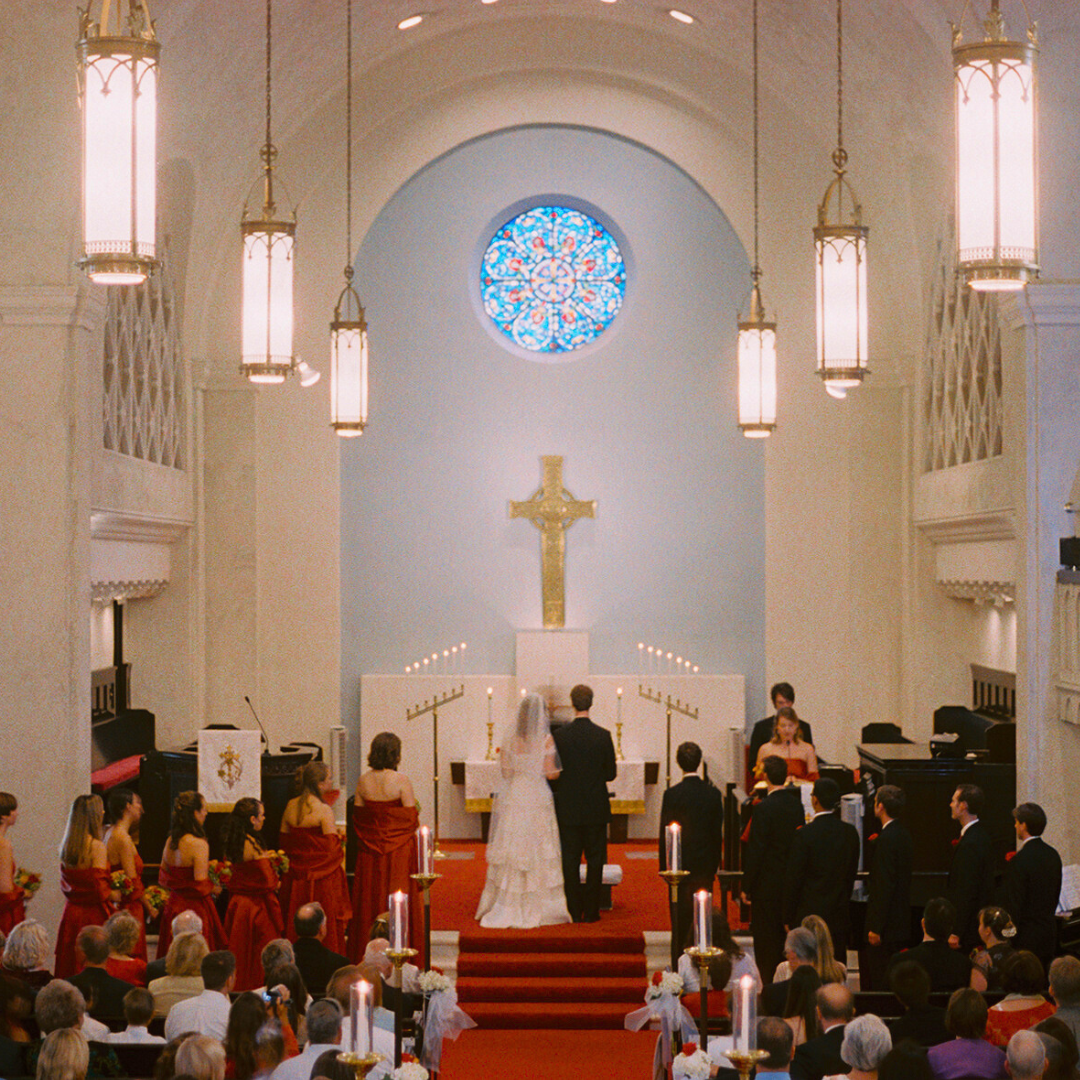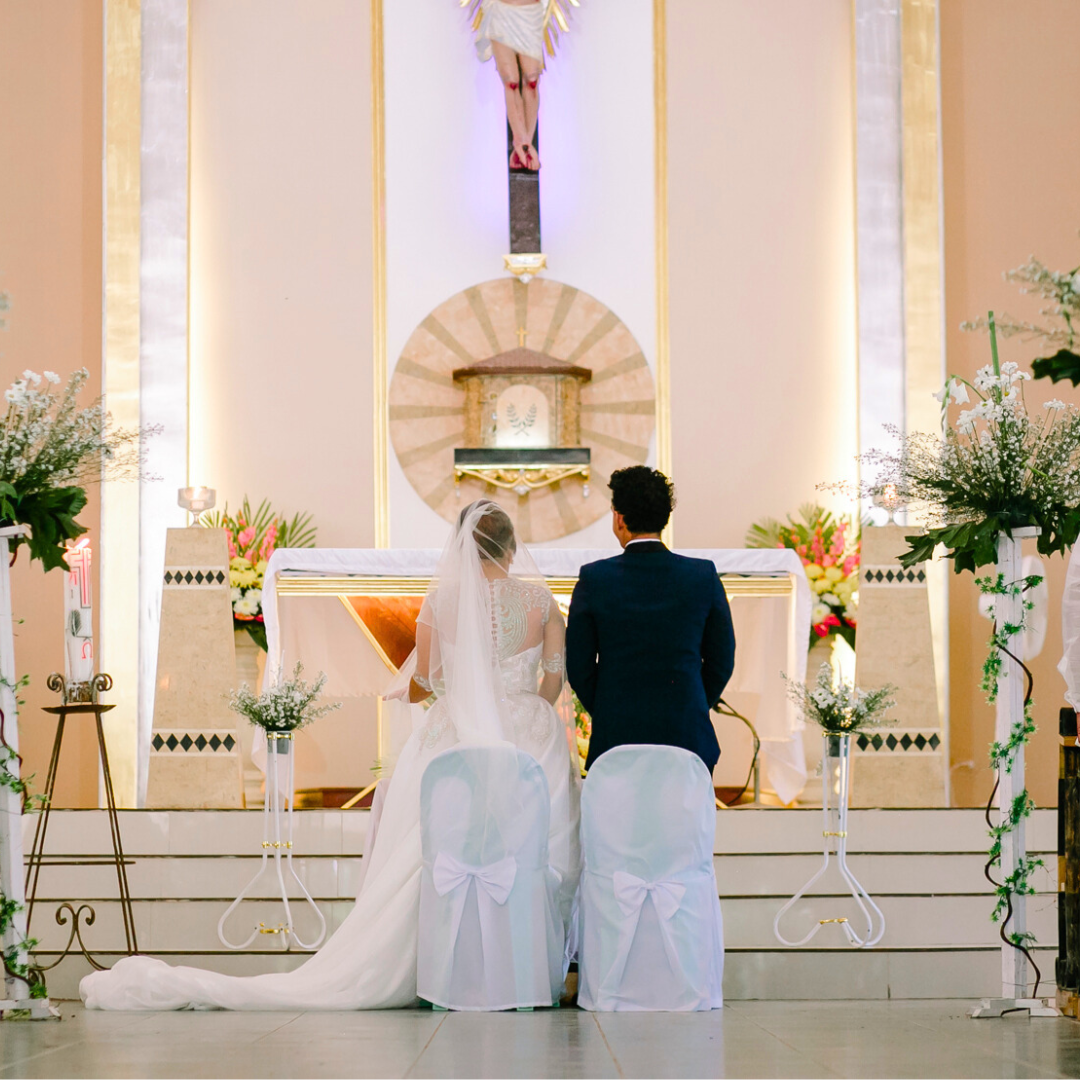
Monika Korzec contrasts North American wedding customs with those in Europe, noting ways our actions during a wedding show our beliefs about marriage.
Wedding ceremonies are deeply rooted in different traditions that have their base in the culture. Let's look at some aspects of different customs and how they relate to the liturgical celebration of a marriage.
Overall, the history of how marriage ceremonies evolved is vibrant and in a large context, what happens during the ceremony symbolizes the current culture in a particular geographical location.
It seems to me like the North American continent is still supporting the “Hollywood model” of the entrance where the bride processes to the groom waiting at the front of the church. Very often, the bride is accompanied by her father, who either “gives” the bride to the groom or simply “allows” her to go on to the next point in her life journey: marriage.
This model, however, is not very popular in Europe. For example, in Poland, where I grew up, it is strongly encouraged that when the groom and bride arrive at the church, they walk together to the front of the church. However, this procession is not where their journey to the altar begins. The young couple’s parents play a huge part in the process by starting the trip to the church with a parental blessing of the couple at one of the couple’s homes. With this blessing, the groom takes the bride and promises to always care for her and to protect her from any harm that can surface in the future.
In such a tradition, the young woman does not feel like she is unequal to her partner. She is not “handed” to her husband as a “possession” (in opposition to the “Hollywood style” in which it may feel like the woman is an object of some kind of a transaction), but she gets to experience the gentleness of womanhood that is protected by courageous manhood. Then, the trip to the church becomes the last moment of their journey where the two of them will become one and when they will ask God for His blessing of this conjugal love.

When the couple enters the church together, it is a sign of their maturity and understanding of the sacrament of marriage, they know that their sacramental marriage will become a sign of God’s love in the neighbourhood or city where they will live and work. Their walking together down the aisle is almost like the entrance procession before the celebration of the Mass. Before the priest approaches the altar, he walks among the people as Jesus walked among the people of his time. Similarly, the new couple enters the church, walking among family and friends to show that this is the moment when the two of them are about to become one, and by being one they will be the witness of God’s love in the world. They will become a visible sign of the invisible grace of God’s love outpoured to the people that will meet this couple in regular daily activities.
Jesus, who is the groom and the Church, who is his bride, are never separated. Jesus walks with his Church. This union is complete, and so is the union that happens between a man and a woman in the celebration of marriage. It becomes a covenant, it is the “walking” together in union during good times and during difficult and challenging events.
I feel like the “Hollywood style” is in great opposition to the above notion. It indicates some kind of inequality where the groom just stands and waits for the bride to approach him. For some reason, in my opinion, this picture has a sense of superiority of the man over the female. It may be subtle, but it is there. It goes against liturgical togetherness. Marriage is all about a commitment between two people, a male and a female, to share their entire lives in a special and intimate way. It is a commitment in which the spouses support each other and encourage each other in their growth in holiness. It is a process of complete faithfulness to one another. Therefore, their lack of being together at the entrance procession makes no sense.
Our Lord, Jesus Christ, raised marriage to the dignity of a sacrament—a sacrament of love, and love always strives to focus on the other person’s good. The sacrament of marriage is not about one individual, but it is about the couple. This is why I strongly believe that togetherness should be displayed right from the moment when the couple enters the church and enters it together.

Copyright 2024 Monika Korzec
Images: Canva
About the Author

Monika Korzec
Monika Korzec is a wife and a mother of three children and works as a Pastoral Minister at a Catholic family of parishes in London, Ontario. She also manages a ContemplativeRetreat.com website. Her deep interest in spiritual formation put her on a path of exploring the mysticism of parenthood through her studies in the Doctor of Ministry degree programme.


.png?width=1806&height=731&name=CatholicMom_hcfm_logo1_pos_871c_2728c%20(002).png)
Comments